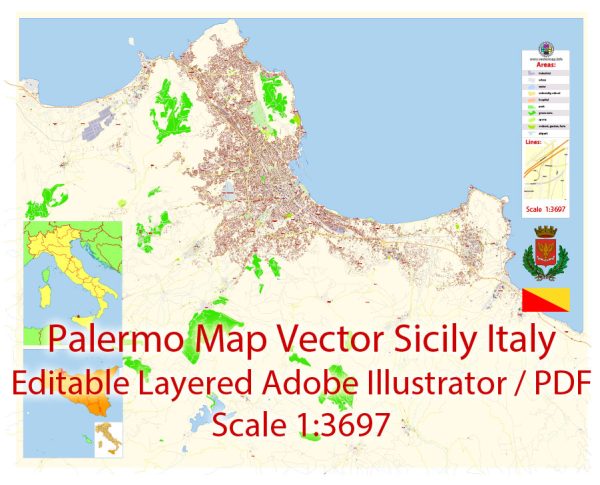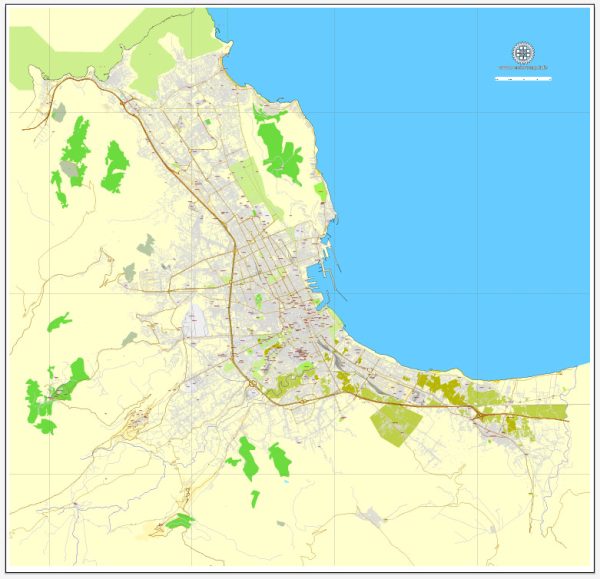Palermo, the capital city of Sicily, Italy, is rich in history, culture, and architecture. While it doesn’t have an extensive network of waterways and bridges like some other cities, it does have several notable features. Vectormap.Net provide you with the most accurate and up-to-date vector maps in Adobe Illustrator, PDF and other formats, designed for editing and printing. Please read the vector map descriptions carefully.
Waterways:
Palermo is situated on the northwest coast of Sicily, along the Tyrrhenian Sea. While it doesn’t have major navigable waterways within the city, the historic harbor area, known as the Cala, has been an important port for centuries. The port has played a crucial role in the city’s history, acting as a hub for trade and cultural exchange.
Bridges:
Palermo is not particularly known for its bridges, as the city’s layout is not dominated by water crossings like some other cities. However, there are several smaller bridges over canals and water channels in certain neighborhoods. One example is the Ponte dell’Ammiraglio, a medieval bridge with Arab-Norman influences.
Main Streets:
- Via Maqueda: One of the main streets in Palermo, connecting the old city center with the newer districts. It’s a vibrant street lined with shops, cafes, and historic buildings.
- Corso Vittorio Emanuele: Another important avenue, stretching from the Teatro Massimo to the seafront. Along this street, you’ll find various shops, restaurants, and architectural landmarks.
- Via Roma: A bustling street known for its shops, boutiques, and theaters. It connects the Politeama Theatre to the central railway station.
- Viale della Libertà: This broad avenue is one of the most elegant in Palermo, featuring tree-lined sidewalks, upscale shops, and historic buildings.
- Foro Italico: A seaside promenade offering beautiful views of the sea and nearby mountains. It’s a popular spot for leisurely walks and enjoying the sea breeze.
- Via Lincoln: Located in the historic city center, this street is known for its Baroque architecture and leads to the Quattro Canti, a famous intersection.
- Via Ruggero Settimo: A central street in Palermo, home to government buildings, theaters, and high-end shops. It’s a hub of activity and events.
These streets not only serve as transportation routes but are also key parts of Palermo’s social and cultural life. They showcase the city’s architectural heritage, blend of cultures, and vibrant atmosphere. Keep in mind that the charm of Palermo lies not just in its individual landmarks but in the overall tapestry of its streets, squares, and neighborhoods.



 Author: Kirill Shrayber, Ph.D.
Author: Kirill Shrayber, Ph.D.